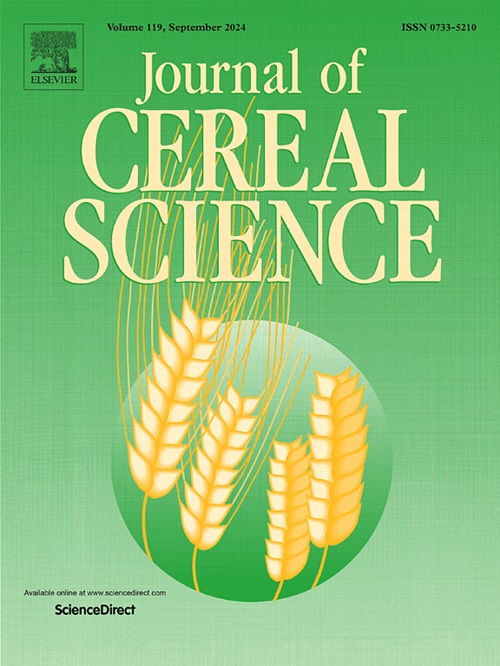Effects of different sorghum cultivars on physical properties, total phenolic content and antioxidant capacities of pasta produced from durum-sorghum blends
IF 3.7
2区 农林科学
Q2 FOOD SCIENCE & TECHNOLOGY
引用次数: 0
Abstract
Sorghum (Sorghum bicolor (L.) Moench) is a drought-tolerant, gluten-free cereal with significant potential to enhance the nutritional benefits of food products. This study aimed to evaluate the influence of eight sorghum cultivars grown in Austria on the physical and nutritional quality (total phenolic content and antioxidant activities) of pasta produced from durum-sorghum blends (60:40). Additionally, the effect of sorghum on starch and protein digestibility was examined in the cooked pasta. The optimal cooking time was lower after sorghum addition, attributed to the reduced gluten content and hydrophobic nature of sorghum proteins. Higher protein, starch, and amylose content were positively, while higher content of starch damage, crude fat, and ash were negatively correlated with optimal cooking time. Sorghum blended pasta had lowered firmness and water absorption capacity, and increased cooking loss. Despite a reduction in TPC and antioxidant activities during pasta processing, sorghum blended pasta maintained higher phenolic content and antioxidant capacities than durum pasta, and starch digestibility was higher. Differences among the cultivars used were observed with Leggend demonstrating the most promising characteristics. This study provides first insights into the potential of different sorghum cultivars as plant-based ingredients in pasta, contributing to the development of healthier and more sustainable foods.

不同高粱品种对硬高粱混合面食物理特性、总酚含量和抗氧化能力的影响
高粱(Sorghum bicolor, L.)Moench)是一种耐旱、无麸质谷物,具有提高食品营养价值的巨大潜力。本研究旨在评价奥地利8个高粱品种对硬粒-高粱混合面食的物理和营养品质(总酚含量和抗氧化活性)的影响(60:40)。此外,还考察了高粱对熟面食中淀粉和蛋白质消化率的影响。添加高粱后,最佳蒸煮时间缩短,这与高粱蛋白的疏水性和面筋含量降低有关。较高的蛋白质、淀粉和直链淀粉含量与最佳蒸煮时间呈正相关,较高的淀粉损伤、粗脂肪和灰分含量与最佳蒸煮时间呈负相关。高粱混合面食的硬度和吸水能力降低,蒸煮损失增加。尽管在面食加工过程中TPC和抗氧化活性降低,但高粱混合面食的酚类含量和抗氧化能力仍高于硬粒面食,淀粉消化率也高于硬粒面食。所使用的栽培品种之间存在差异,其中legend表现出最有希望的特性。这项研究首次揭示了不同高粱品种作为意面植物性成分的潜力,有助于开发更健康、更可持续的食物。
本文章由计算机程序翻译,如有差异,请以英文原文为准。
求助全文
约1分钟内获得全文
求助全文
来源期刊

Journal of Cereal Science
工程技术-食品科技
CiteScore
7.80
自引率
2.60%
发文量
163
审稿时长
38 days
期刊介绍:
The Journal of Cereal Science was established in 1983 to provide an International forum for the publication of original research papers of high standing covering all aspects of cereal science related to the functional and nutritional quality of cereal grains (true cereals - members of the Poaceae family and starchy pseudocereals - members of the Amaranthaceae, Chenopodiaceae and Polygonaceae families) and their products, in relation to the cereals used. The journal also publishes concise and critical review articles appraising the status and future directions of specific areas of cereal science and short communications that present news of important advances in research. The journal aims at topicality and at providing comprehensive coverage of progress in the field.
 求助内容:
求助内容: 应助结果提醒方式:
应助结果提醒方式:


